LOS ANGELES, CA – November 28th, 2025
Miracles do happen.. The OctaneStudio+ 2026 Black Friday bundle is back and better than ever! For just €16.65 / month (annual license only), OctaneStudio+ 2026 – once again – features a full-year subscription to Greyscalegorilla Plus, the ultimate library for materials, textures, and HDRIs, as well as €50 in Render Credits to use for high performance GPU cloud rendering on the Render Network and the new OTOY Studio portal – a creative hub for neural rendering workflows integrating 700+ tools and services from Topaz Labs, Google DeepMind, Higgsfield, Kling, Runway, LTX, Luma Labs, and many more.
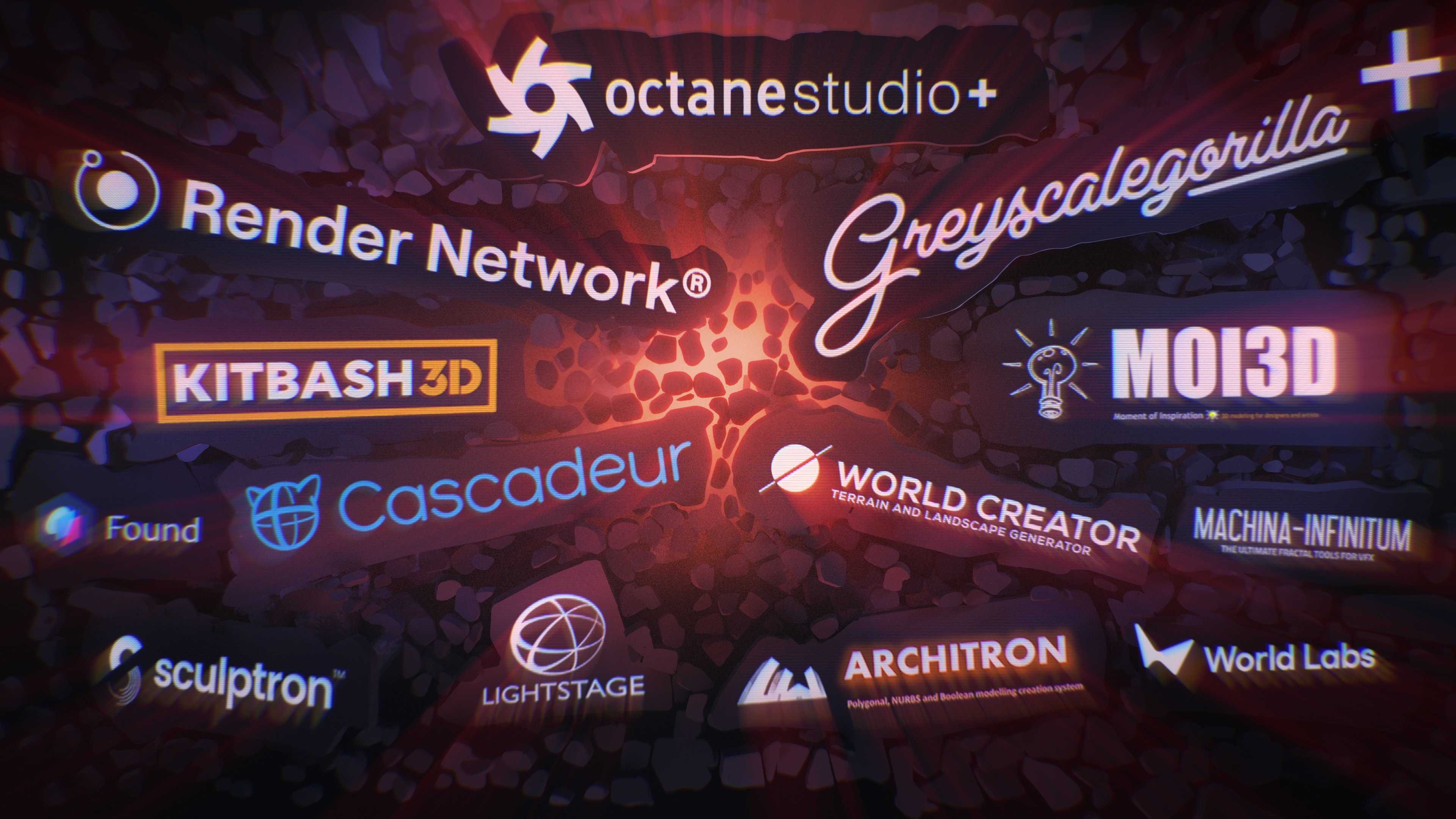
OctaneStudio+ 2026 subscriptions also come with unlimited network rendering (up to 10 nodes), over 20+ DCC integrations, two new KitBash3D Kits, LightStage scan data – with all new gaussian splat models – and full commercial software licenses to World Creator, Architron, Cascadeur, MoI 3D, Sculptron, Aalab, and new Octane Camera FX and Vectron packs from Machina Infinitum.
Today’s public release of Octane 2026.1 brings industry leading GPU rendering tools to both PC and Mac users, including: the industry’s first production ready integration of relightable Gaussian Splats, real time streaming of massive geometry via meshlets, live OSL texture displacement, trace sets, neural radiance caching, and built in OpenPBR and MaterialX support.
Concurrently, OTOY is inviting artists to a close beta of Octane 2027 – featuring Real Time Neural Rendering, direct NeRF and 4D Gaussian Splat generation, generative PBR materials, unlimited UV maps, visibility caching, wave optics and world model integration.
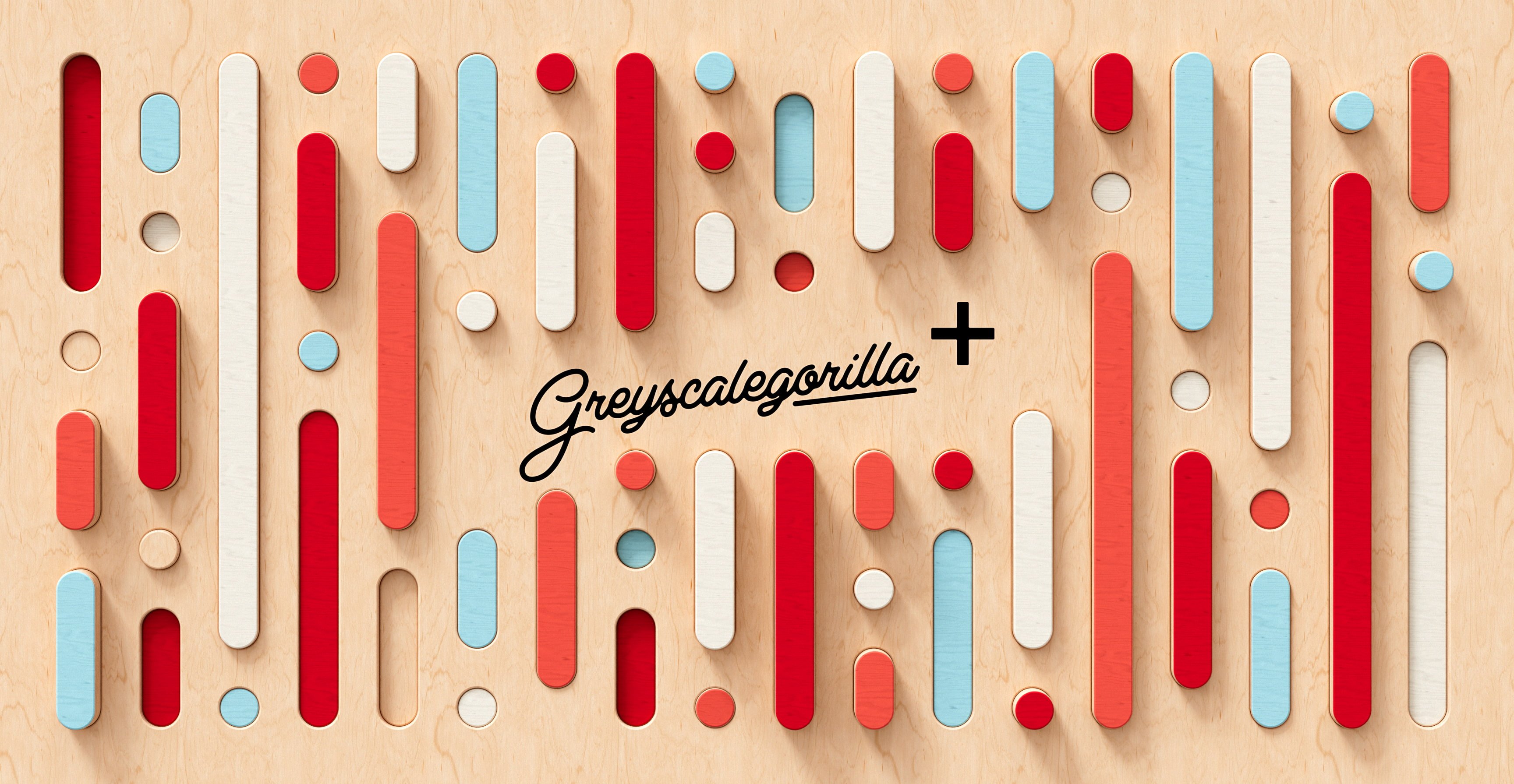
Greyscalegorilla Plus Annual Pass
OTOY’s Black Friday bundle offers OctaneStudio+ artists a full year subscription to the industry’s ultimate library for materials, textures, HDRIs, tutorials, plug-ins and more – an incredible value. (Limited time offer on annual subscriptions only, redeemable before 1/31/26 on new Greyscalegorilla Plus subscriptions and returning Black Friday customers only).
The Render Network
Octane Studio+ subscribers get priority access to near unlimited decentralized cloud GPU rendering power on the Render Network with integrations for popular 3D, VFX and ML jobs in one artist centric workflow, with:
- Multi-render support for Blender Cycles and a new Redshift integration with native C4D file support – enabling artists to mix and match render engines based on a project’s needs, all in one frictionless workflow.
- An All New Manager App with API Access – featuring a download manager and differential uploading, providing robust production workflow tools.
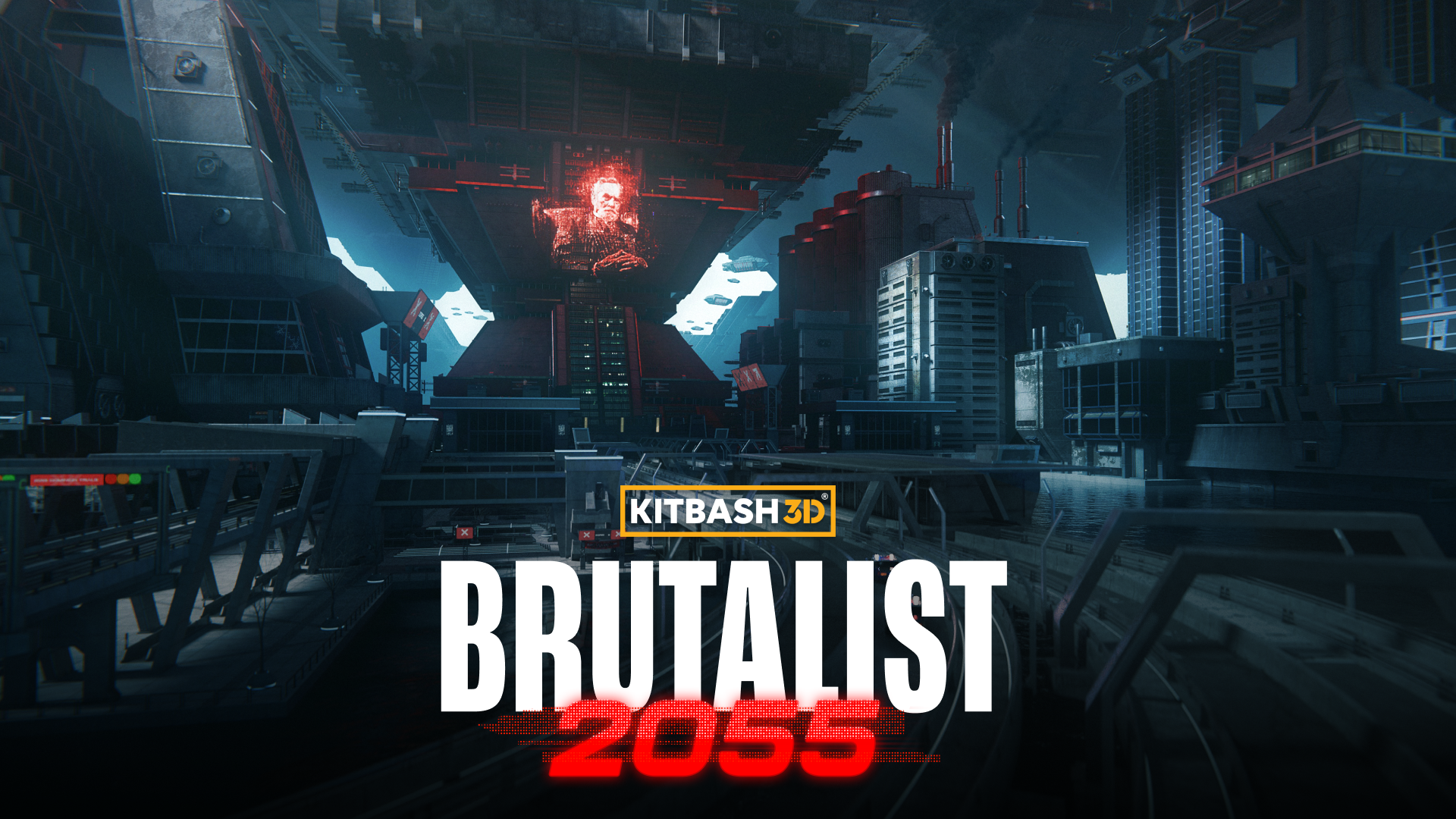
KitBash3D Bundle for Octane
Receive a KitBash3D Ghost Realm Kit and Brutalist 2055 Kit for free with your Black Friday subscription (redeemable until 12/31/2025 via a coupon code through the KitBash3D store).
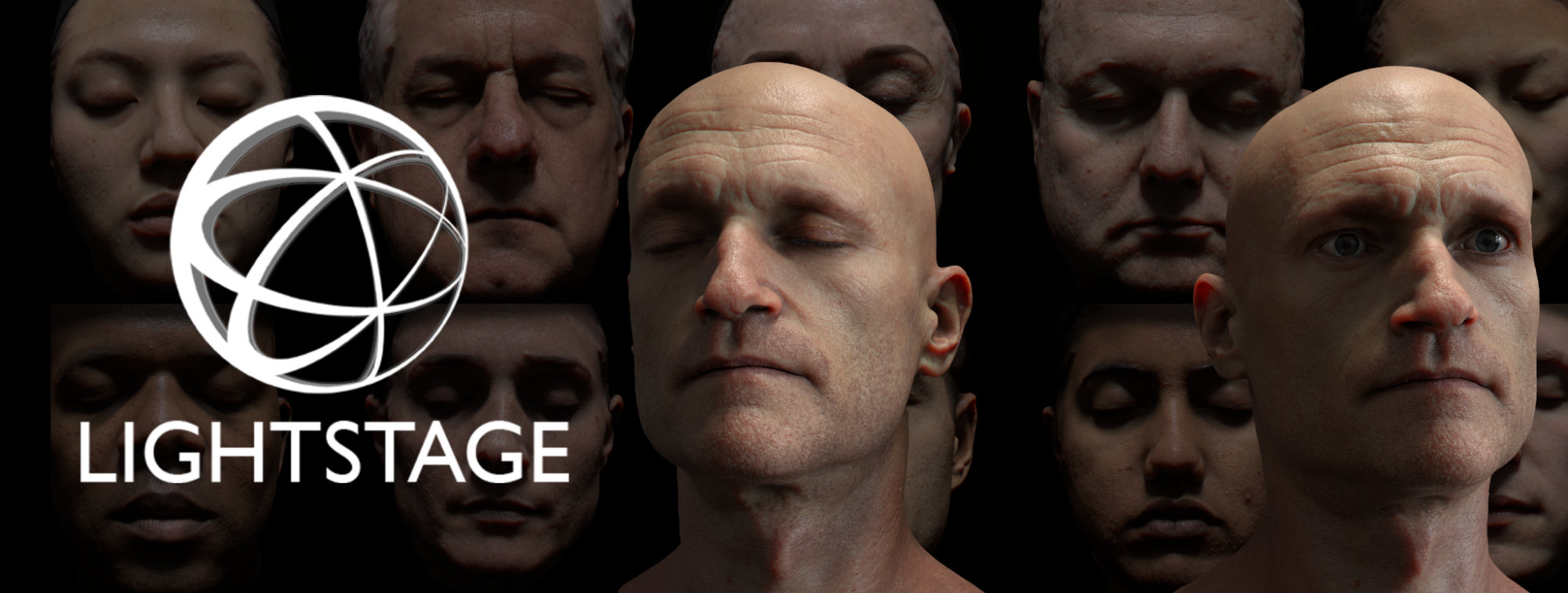
LightStage MetaFace and MetaBody Scans
Newly updated, OTOY’s Academy Award-winning digital human scans feature original LightStage data for hundreds of human faces, bodies, and expressions with retopologized meshes. This year’s scan bundle features all new LightStage heads and MetaBody scans, with new .ply Gaussian Splat models! (learn more)
Along With:
-
World Creator – All OTOY subscribers will now get access to a full Indie license to the latest version of the incredible GPU-powered terrain and landscape generator.
-
World Labs – OctaneStudio+ Subscribers get access to a three-month free subscription to Marble Pro, the leading multimodal world model, which lets anyone create high-fidelity, persistent 3D worlds from just a single image, video, text prompt, or 3D layout. (More Info)*
-
Found Pro – Black Friday subscribers will receive six months of Found Pro for free (redeemable until 12/31/25 via coupon through the Aalab website).
-
MoI 3D – The industry’s leading intuitive, hard surface 3D modeling software, used in conjunction with Octane for years – is included with all subscriptions, with improved integration in Octane 2026.
-
Cascadeur – The breakthrough AI driven animation and physics animation system for creating physically accurate animations for games and movies without using motion capture technology.
-
Architron – Architron (based on LWCAD) is a Polygonal, NURBS & Boolean modeling creation tool for advanced interiors, exteriors, and architectural visualization in C4D and other DCC packages.
-
Vectron Ultimate VFX Bundle – from Machina-Infinitum – Vectron Fractal tutorials, tools, and formulas by Machina Infinitum for next-gen generative rendering pipelines – all you need for creating procedural worlds, abstract shapes, looping animations and surreal environments. This year’s bundle features new Octane Camera FX and Vectron packs.
And Introducing OTOY Studio Beta
OctaneStudio+ is also bringing you a new integration with the upcoming OTOY Studio service, which will allow for new generative and augmentative AI workflows inside the Octane node graph. Some of these include text-to-image, image-to-image, image-to-mesh, text-to-video, etc. and will allow for faster iterations while developing new concepts and generation of new assets for your Octane projects.
canvas.otoy.ai
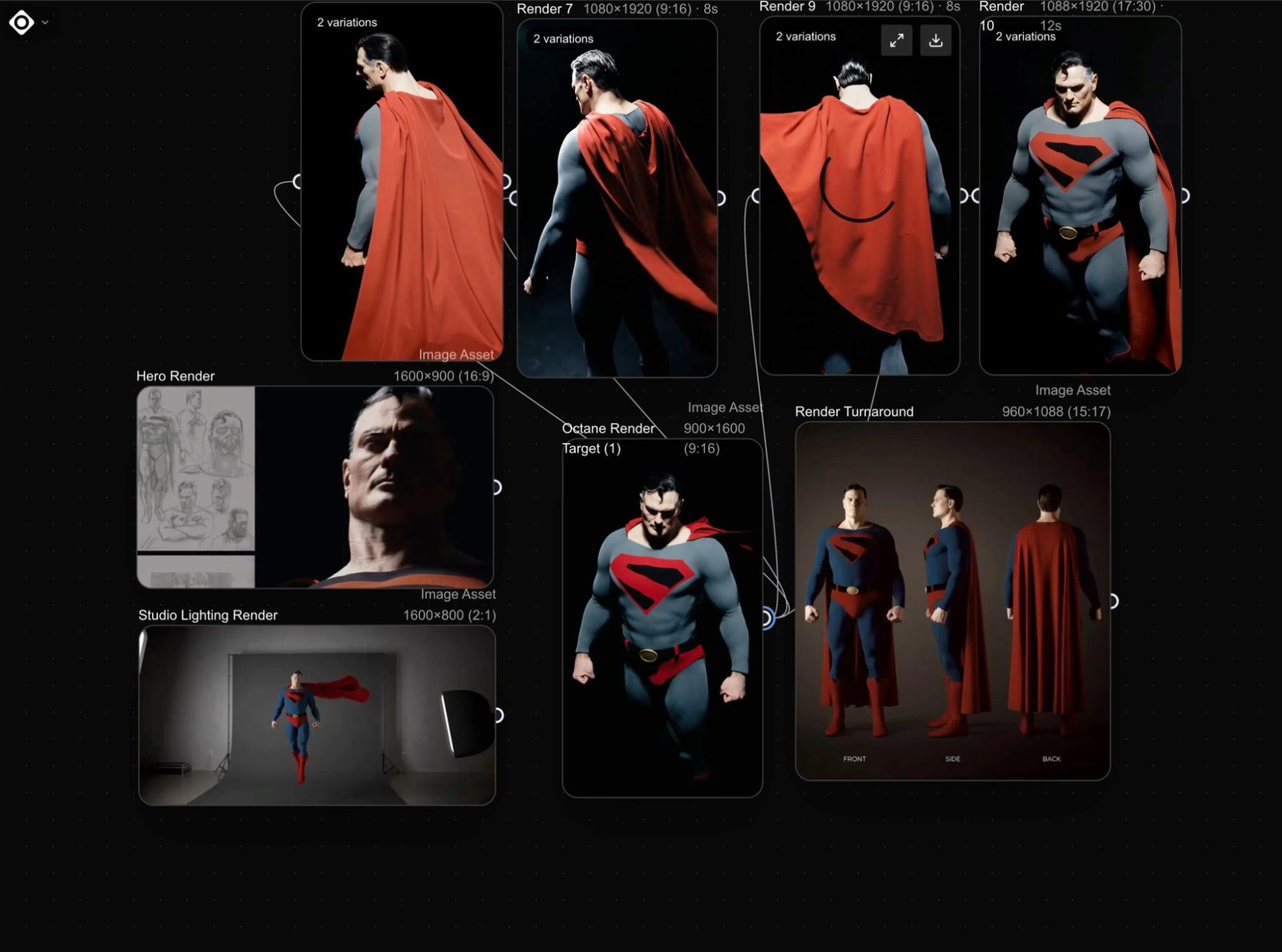

OTOY Studio empowers artists to integrate generative creation workflows inside professional 3D production pipelines – with an artist friendly node graph, creative canvas, and video editor for unmatched control.


Generate raw materials and utility passes natively in Octane with integration into Octane DCC pipelines, including: textures, references, backplates, gobo maps, HDRIs, splats, image sequences, motion clips, clean plates, cutouts, audio design, multi-view images, reconstruction assists, and more.

You can see the live scene shown in the video.otoy.ai 4D video editor here:
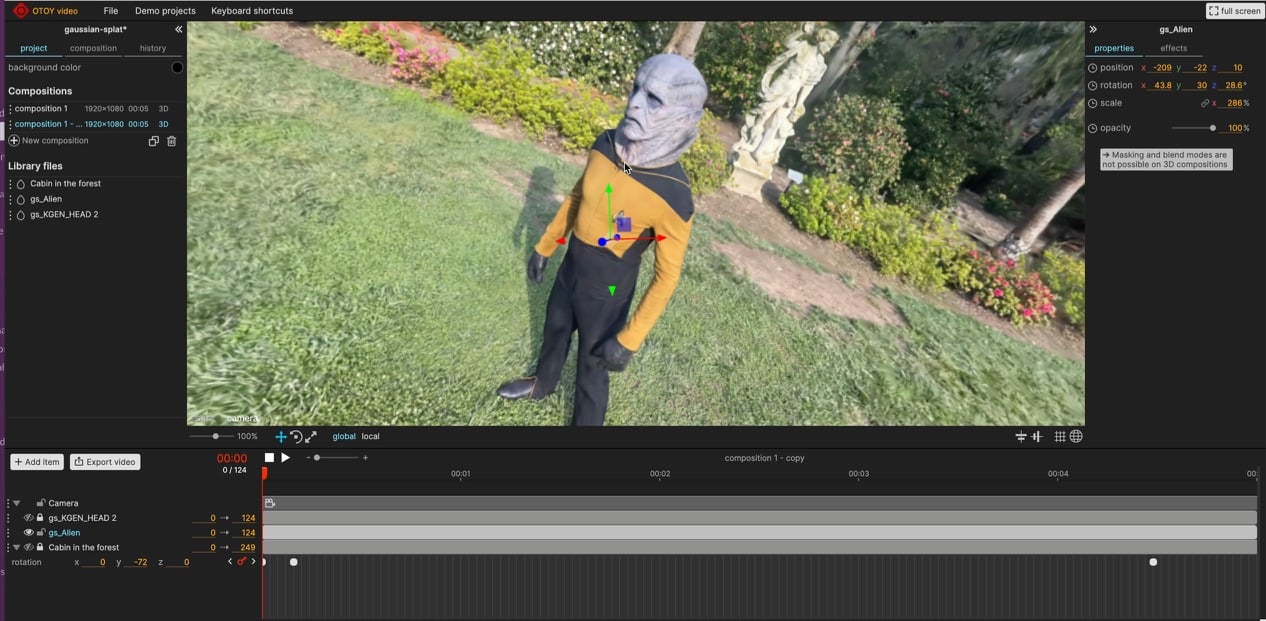
You can stay up to date with the latest OTOY Studio Beta releases coming to Octane Studio+ subscribers for Octane 2026 and Octane 2027 at OTOY.AI.
Octane 2026 Features:
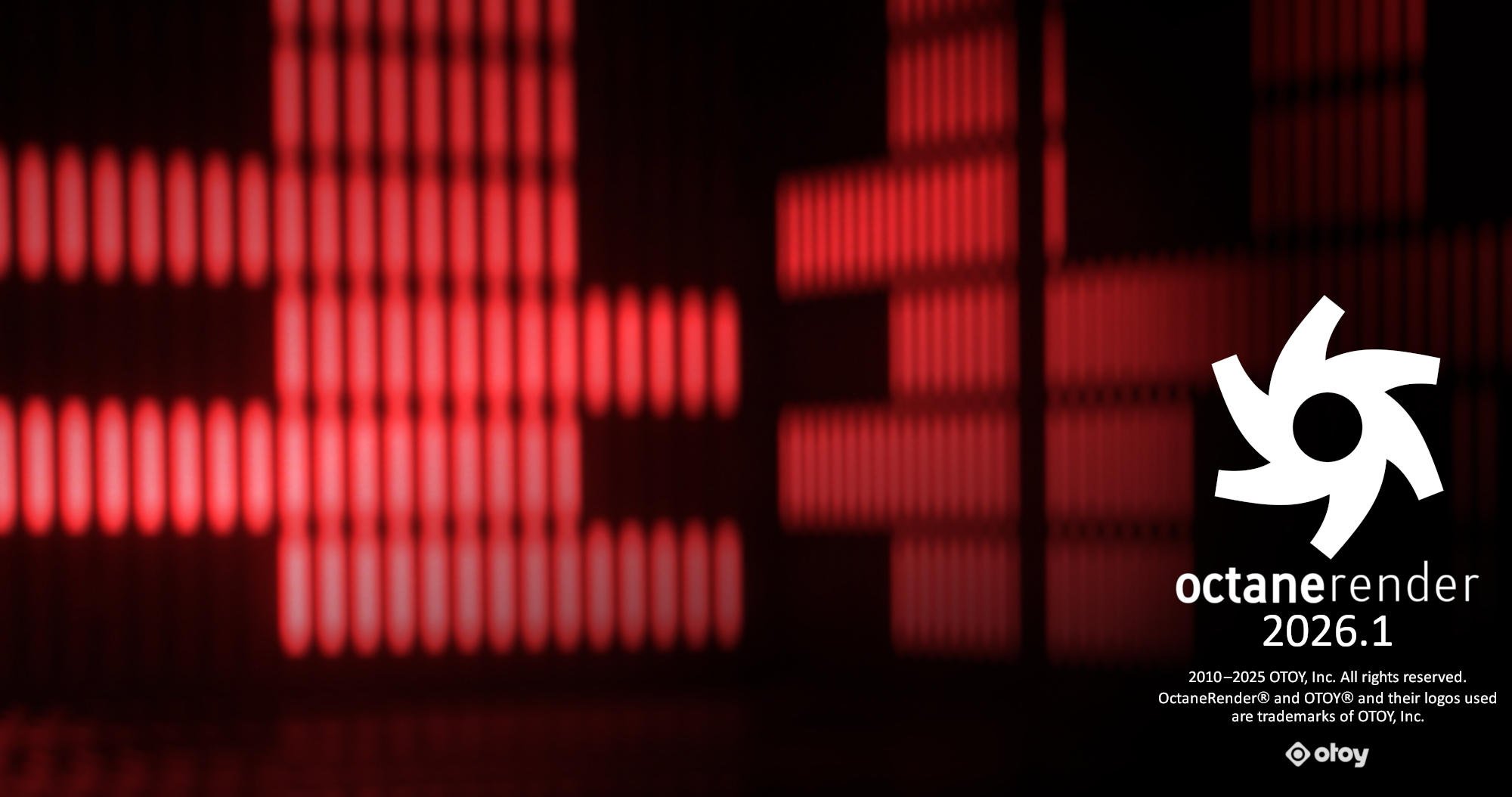
- Support for Gaussian splats with full path traced GPU rendering.
- New high quality texture displacement for better displacement details and with support for all texture types.
- Full support for trace sets to include/exclude other objects or scene data from within any shader or object node graph.
- New neural radiance cache (NRC) system, an adaptive neural network trained at runtime which significantly reduces noise on the first pixel.
- Native support for MaterialX and OpenPBR material standards.
- Support for typed textures, both inputs and outputs.
- New meshlets system for streaming massive scene geometry assets adaptively from disk, like Unreal Engine Nanite, but for path tracing.
- New virtual textures system for adaptively streaming massive Gigapixel-scale textures directly from disk.
- Support for more vertex attributes.
Gaussian Splatting
Octane 2026 natively renders Gaussian splats with full path tracing and lighting applied. Splats capture complex lighting effects such as reflections and refraction that change depending on the viewing angle and can be produced from a photos and videos using NeRF Studio or Polycam.
Gaussian splats objects in Octane are rendered in real-time and fully support all camera DoF and raytraced lens effects as well as path traced shading and global illumination with all other scene elements:
Octane 2026 also supports AI World Models generators like Marble, from World Labs, which can interoperate on the Render Network and OTOY Studio.
Octane supports loading .PLY and .SPZ files that contain Gaussian splatting data. OTOY is helping develop new open standards for embedding materials and PBR data in splats through its participation in Khronos and glTF+Splat working groups.
Below are examples of motion graphics effects using Gaussian Splats in Octane:
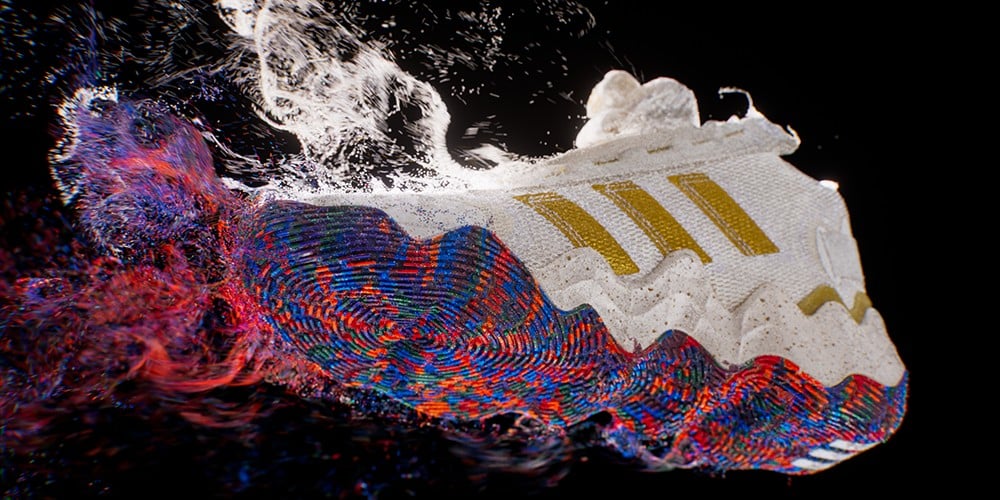
An athletic shoe Gaussian splat with a directional light creating a rim light effect and points driven by an advected particle simulation.
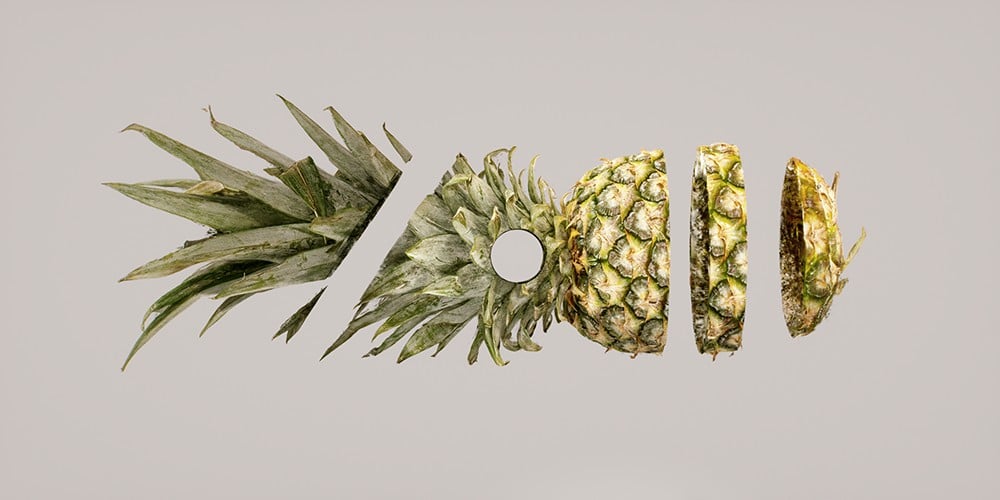
Pineapple Gaussian splat with 4 different clipping objects cutting holes and slicing it apart.
Another example of the power of Gaussian Splats in Octane using instancing of bamboo plants inside of a triangular mesh flower container scattered onto a plane with several glass planes spread out to show refractions and reflections. Gaussian splats have relighting enabled and casting shadows on themselves and the scene geometry.
New OSL Texture Displacement
Octane’s texture displacement system can support live shader input, including OSL textures. The quality of the displaced surface in this mode, especially with high frequency input data has been much improved.

New high quality texture displacement reduces artifacts, requires less resolution and VRAM for the same detail as prior versions, and increases maximum displacement resolution to 16K, for ultra high resolution detail.
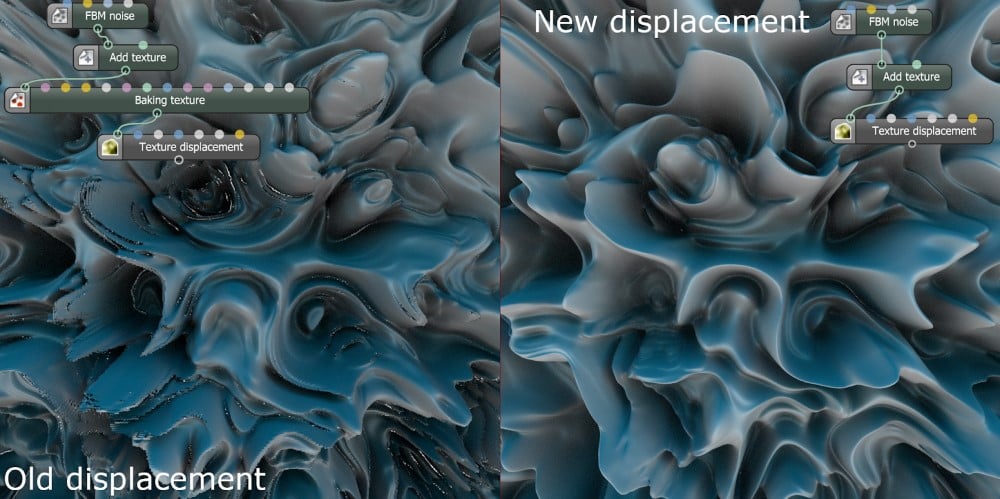
Trace Sets
Trace sets now allow geometry to be made invisible to other geometry – for example, an object’s reflection can be hidden in another reflective object, or an object can be prevented from casting shadows on another object.
Object layers can be applied to reflection, refraction, diffuse and shadow ray bounce types and can optionally apply to multiple bounces rather than just the next one enabling you to set precise rules for reflection, refraction, diffuse, shadows, or a combination of them.

Meshlets
This feature allows Octane to render very detailed geometry while using minimal device memory. It works similar to “Nanite” in Unreal Engine by adaptively choosing a not too fine and not too coarse level of detail for different parts of a mesh – depending on what is visible in the render.
This automatically limits the amount of data that is actually loaded into VRAM without showing a visible difference to the original high resolution geometry, for ultra fast rendering of complex 3D scans and/or vertex displaced, subdivided geometry.
Virtual Streaming “Bufferless” Textures
Virtual streaming textures enables Octane to render very large image textures (many billions of pixels) while only using a few dozen megabytes of VRAM. Octane will create an on-disk tile cache, containing the texture at various levels of detail, and Octane will interactively stream the parts needed for the current camera view point into VRAM, taking indirect effects like glossy reflections into account.
For far away view points, or rough glossy or diffuse reflections, lower levels of detail will be used, this works as automatic texture filtering and reduces sampling noise. Once cached, Octane can open the texture instantly regardless of size – dramatically accelerating your workflow.
MaterialX and OpenPBR Support
MaterialX workflows are now supported natively in Octane with native nodes and importing, providing an open standard for representing materials in a portable way across applications and renderers.

MaterialX materials can be imported from already existing native MaterialX files or existing USD scenes and also authored in Octane using over 130 new Octane nodes which implement the main pattern nodes in MaterialX version 1.39.4 and that can be used in combination with any other existing texture nodes.
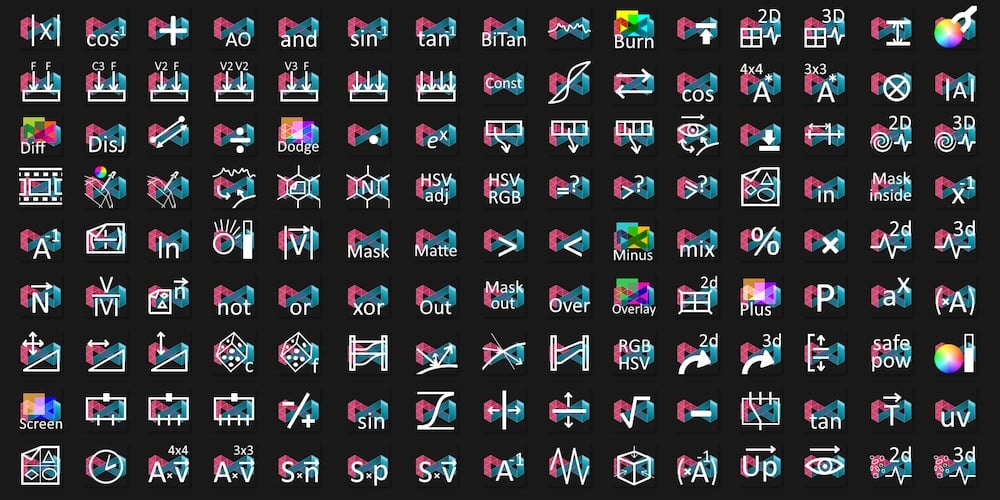
OpenPBR Surface is now supported in Octane as a new material node. It is an open standard of an uber material for physically based rendering hosted by the Academy Software Foundation. An evolution of Autodesk’s Standard Surface material and Adobe’s Standard Material, it has already gained wide adoption in many DCC applications due to its portable design.
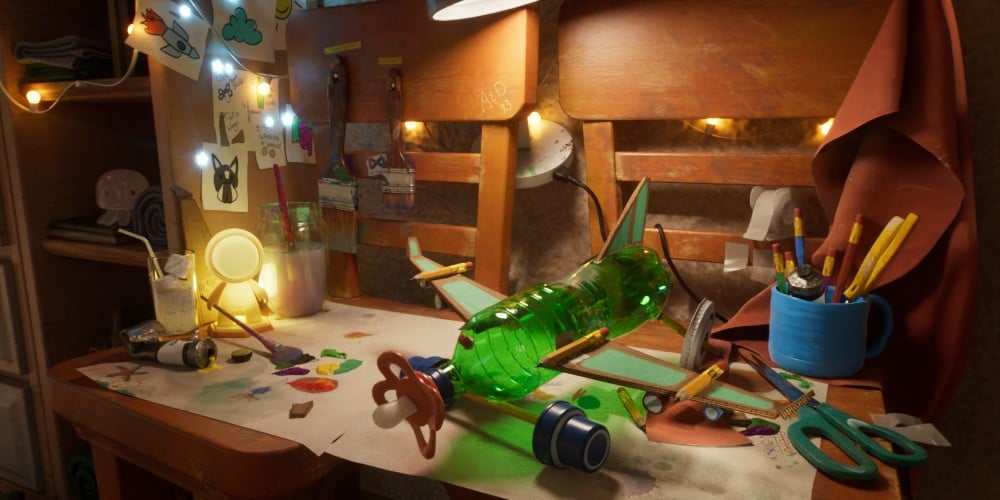
Neural Radiance Cache
Octane’s new Neural Radiance Cache (NRC) allows for faster noise resolution by using a neural network that is trained at render time. This is especially useful in scenes with indirect lighting where many rays might not reach the camera.
Here’s a comparison of a low sample count render where early noise reduction can be seen when using NRC in these videos showing side-by-side comparison of early noise reduction with and without NRC in a scene where light contribution comes from indirect sources.
Here is another example set with NRC and live GPU denoising working concurrently:
Typed Textures
Octane 2026 features a much improved workflow for authoring shader graphs using nodes, where node inputs and outputs have specific value types. The OSL Texture node can now have texture pins that are typed to support OSL types including 2D/4D vectors/colors and matrices.
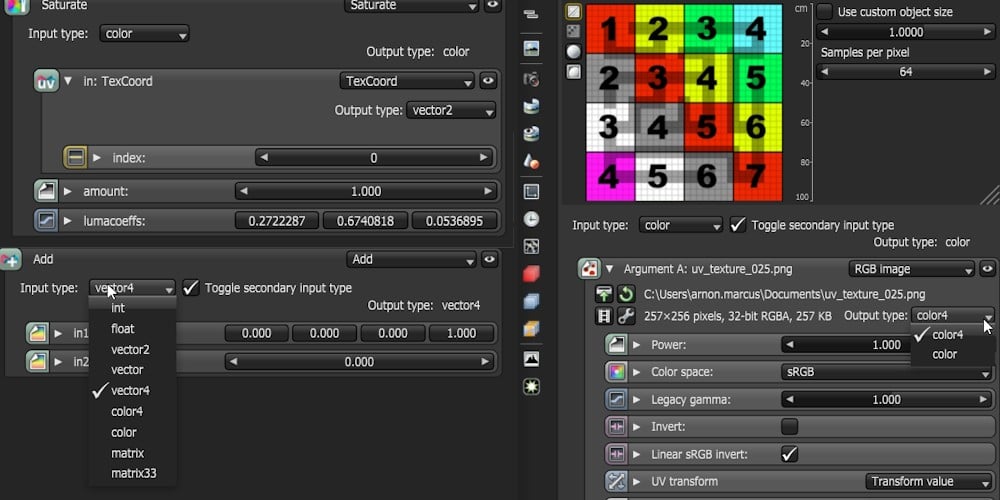
Additional texture value nodes have been added for providing 4D vector and color values and for matrix values. Image texture nodes can now output RGBA colors with alpha channel (when applicable). Binary math operation texture nodes can now operate on selected value types with adaptive UX.
More vertex attributes
Octane 2026.1 increases the maximum count of supported attributes per vertex with 10 float vertex attributes (up from 4) and 10 color vertex attributes (up from 2).
Chinese language support
Octane 2026 introduces a new build of Octane with support for internationalization which allows users to use Octane in simplified Chinese as their main language with a high degree of accuracy.
New Online Activation Model
Improvements to Octane’s online activation logic remove the need to unlock licenses after application crashes, enabling licenses to be used on other machines with greater ease.
Octane 2027 Preview
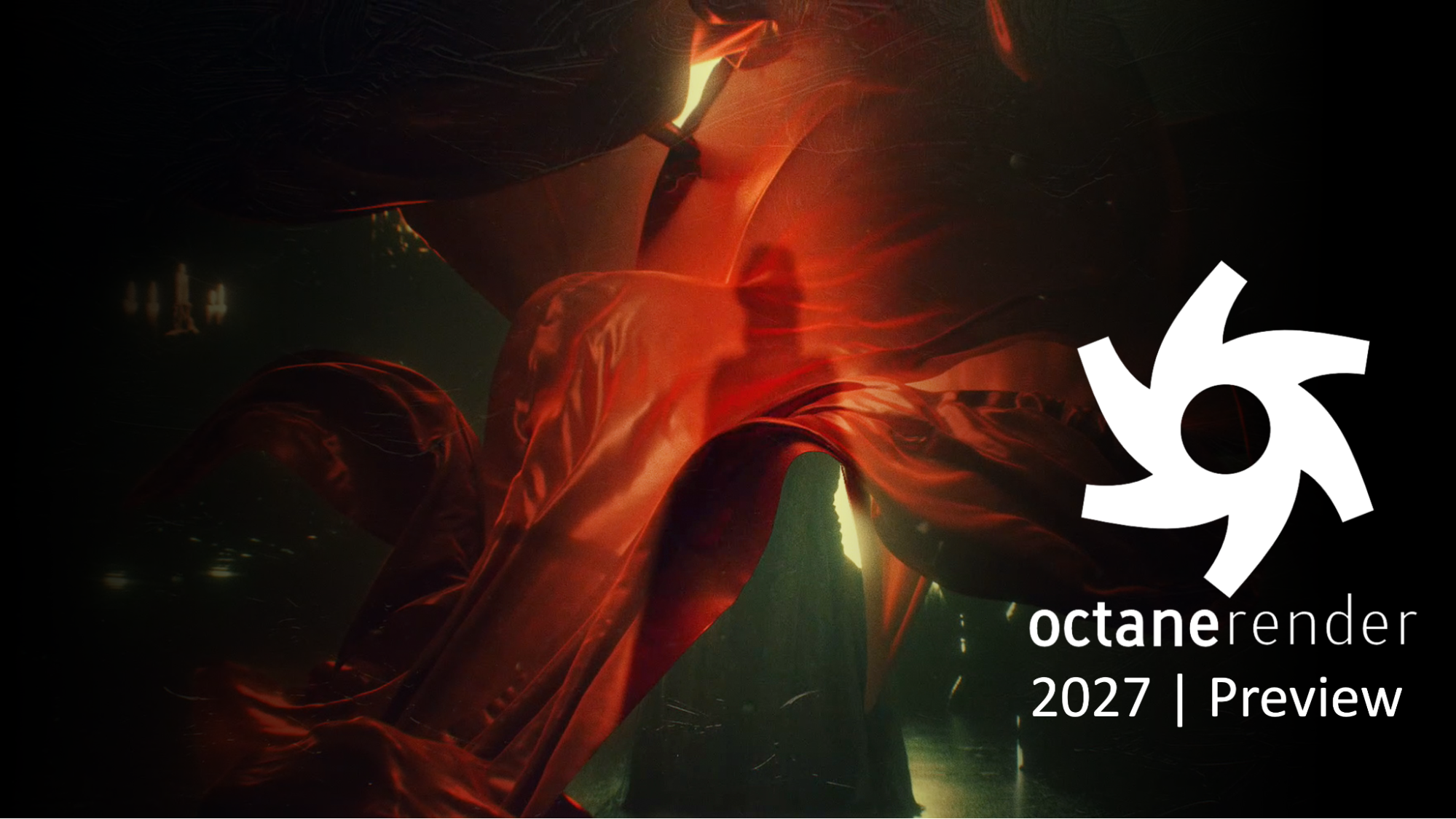
The release of Octane Studio+ also features a preview of our roadmap for Octane 2027, featuring:
- Real-time Neural IPR rendering
- Render to Gaussian Splat
- Anime and Sketch Renderer
- Diffraction and Wave optics
- Generative PBR Materials
- OTOY Studio integration
- Procedural volume, cloud, water, smoke generation
- AI Light 2.0
- Vectron to mesh
- Unlimited UV maps
- GPU mesh deformations
- Full scene USD export
- Python API
- Future Proof support for new Apple and NVIDIA GPUs
Real Time Dynamic Neural Rendering
Octane 2027 features a new real-time neural rendering mode, built on Octane 2026’s NRC framework, which enables near noise-free interactive rendering without any compromises to Octane’s spectral path-tracing, even in complex lighting conditions.
Neural Rendering Scenes as Gaussian Splats
Octane 2027 will render scenes directly as Neural Objects and Gaussian splats without intermediate steps – an industry first. This will allow users to generate a NeRF or splat file as the render output of the entire scene, and load it into a growing ecosystem of applications with support for standard splat formats. This system can make use of spherical harmonics, allowing view-dependent effects to be properly stored in the output file.
Octane 2027 will render scenes directly as 4D Neural Objects or Gaussian splats – without intermediate steps – an industry first. This empowers artists to generate a ‘holographic’ 4D NeRF or splat file in place of a 2D frame-based video. The output can be used across a growing ecosystem of DCC applications and AI rendering models that ingest standard splat file formats. This system makes use of spherical harmonics, 4DGS Video and embedded PBR data allowing view-dependent effects, motion and relighting information to be properly stored in splat data.
This Octane scene is rendered directly as a Gaussian Splat (.PLY) file using Octane 2027:
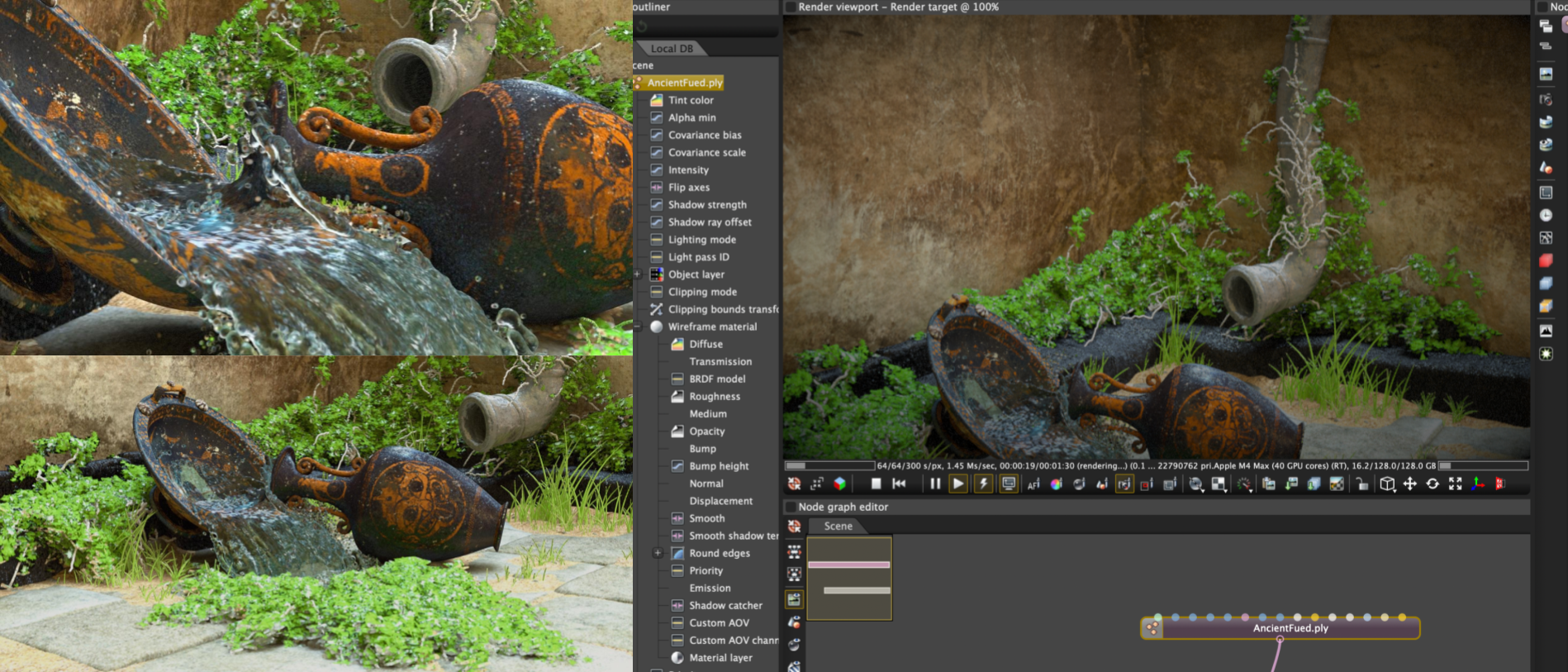
Octane 2027 splat generation works with entire scenes or sub-elements. Splats can load back in Octane as proxies that preserve light transport:
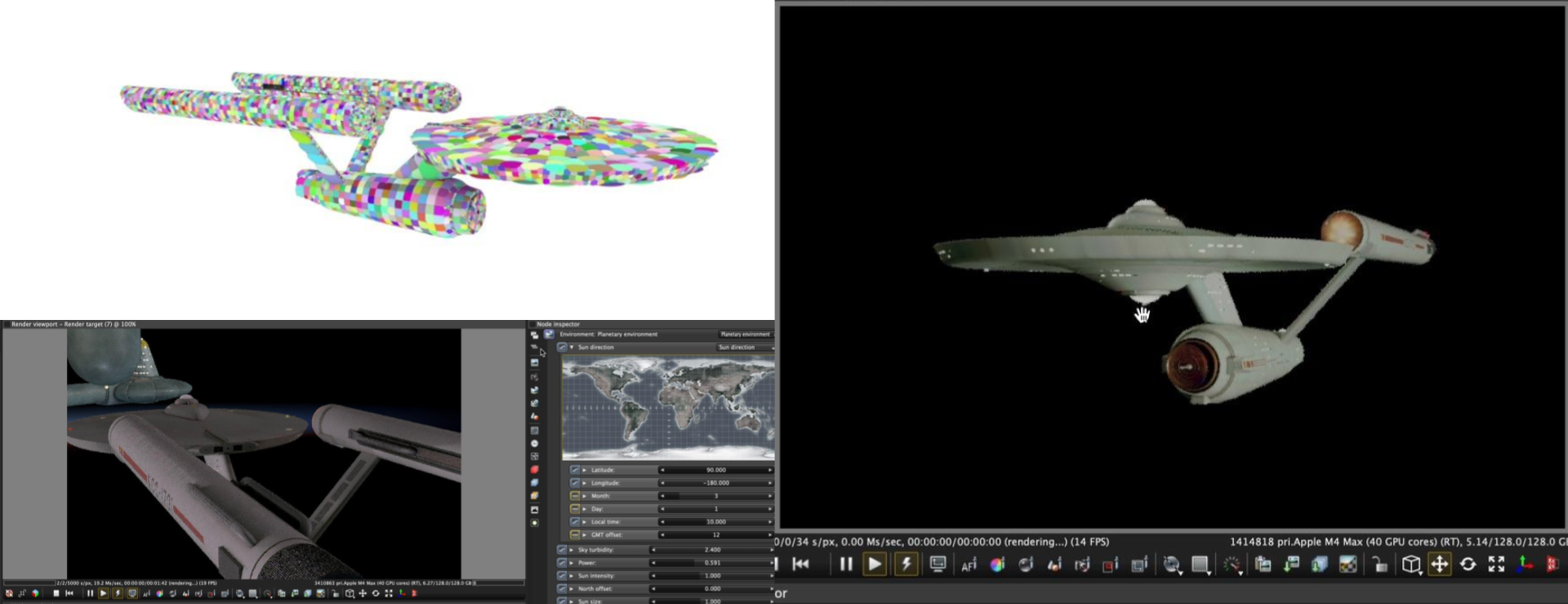
Star Trek USS Enterprise Ship Exterior, bridge interiors, and Space Station:
Below is a sample image of an output Gaussian splat generated by Octane and then rendered back by Octane. This was created with over 14 million spherical harmonic samples. It took just 2 1/2 minutes to calculate on a single machine. The object itself is made up of over 500K splats.
Anime and Sketch Rendering
Octane 2027 features a new real-time best in class Anime-rendering mode featuring sketched edges, highlighted silhouettes and more to support stylized artistic animation. The edges can extend beyond the geometry bounds and their appearance can be fully configured, including width, tint color, texture and displacement.
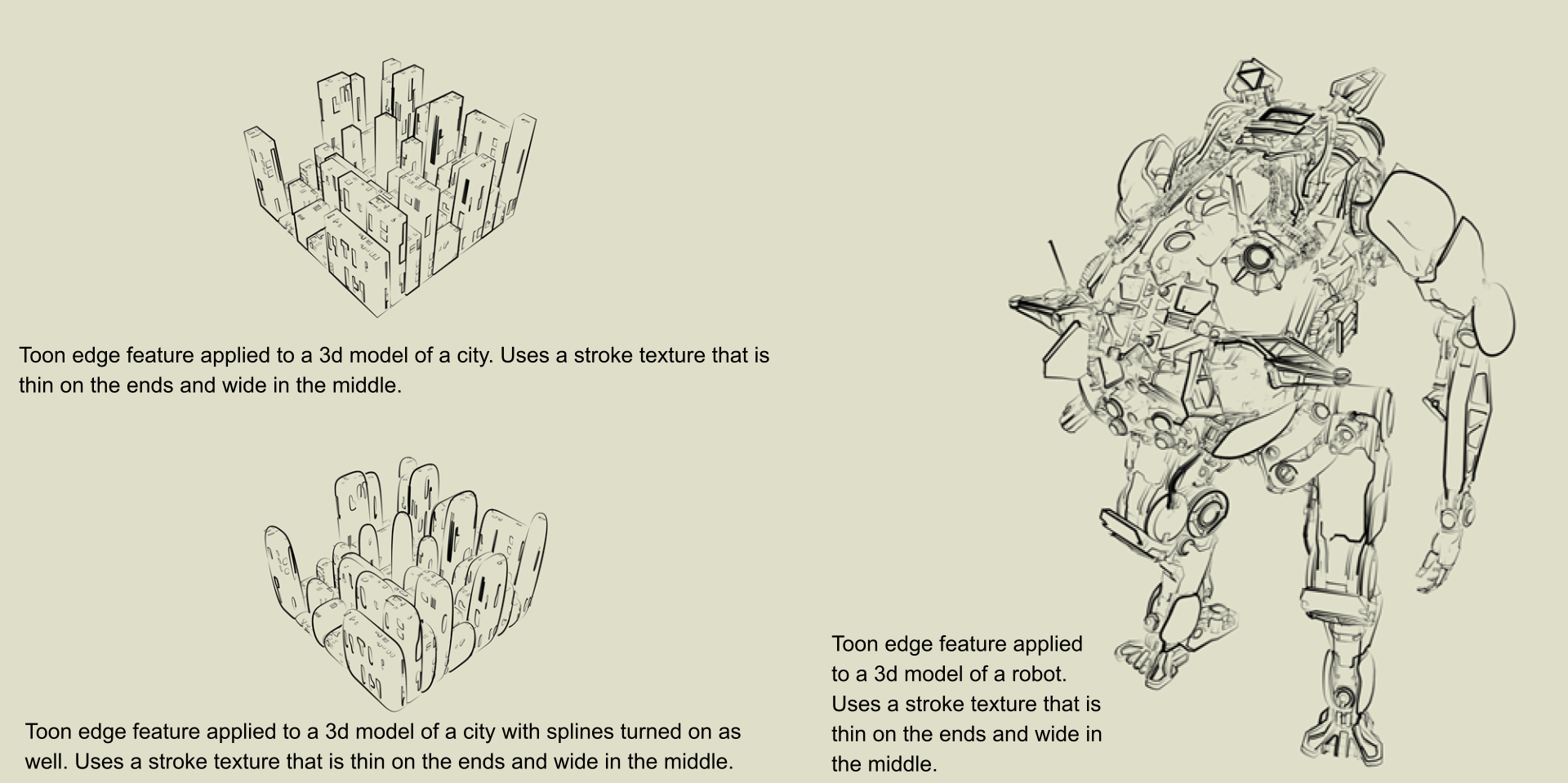
Wave Optics Rendering: Diffraction & Birefringence
New wave optics concepts such as birefringence and diffraction grating are coming to Octane to make your renders feel even more realistic.

These renders showcase several effects simulated with the new wave-optics universal material. On the left, the glass displays pure birefringence with its characteristic double-image effect. The glass sphere on the right carries a thin birefringent coating, producing interference patterns that arise from the combination of birefringence and thin-film effects. The compact disc, smartphone, and gift wrap exhibit diffraction-grating patterns caused by tiny periodic surface structures that split light into coloured interference bands. The paper-clip packaging also shows stress-induced birefringence, a common effect in strained plastics.
Generative PBR Materials
We are introducing a new AI Material Layer node supporting the generation of quality PBR materials using an artist defined text or photo reference prompt – enabling the creation of new materials almost immediately, and running locally on your machine.
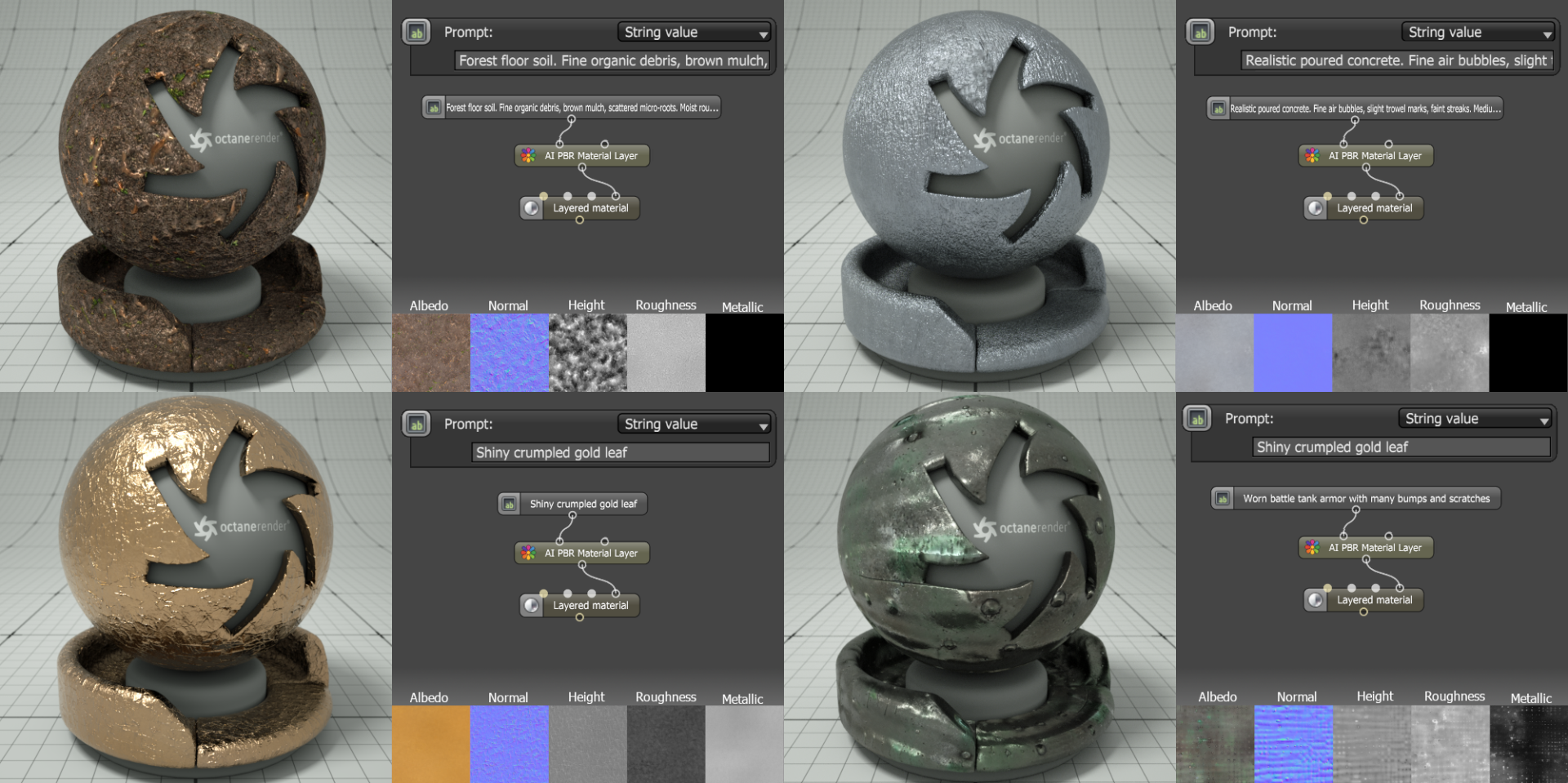
AI Light 2.0: noise free mass-light sampling
AI Light 2.0 – many light sampling is a hierarchical light-sampling algorithm that improves on Octane’s AI Light and traditional power-based sampling by incorporating full spatial and directional information for all emissive primitives, which allows sampling the emitters with the most contribution, delivering more accurate results with significantly reduced noise.
Below is a comparison between the new method and Octane’s earlier sampling algorithm:

Vectron to Mesh
This feature allows converting a Vectron object or an entire Vectron graph to a triangular mesh. This allows for it to be used to scatter other objects onto the procedural surface.

Native Procedural Volume Generator: Foam, Smoke and Clouds
We are working on adding support for generation of parametric procedural volumetric objects inside Octane such as clouds, smoke or foam.
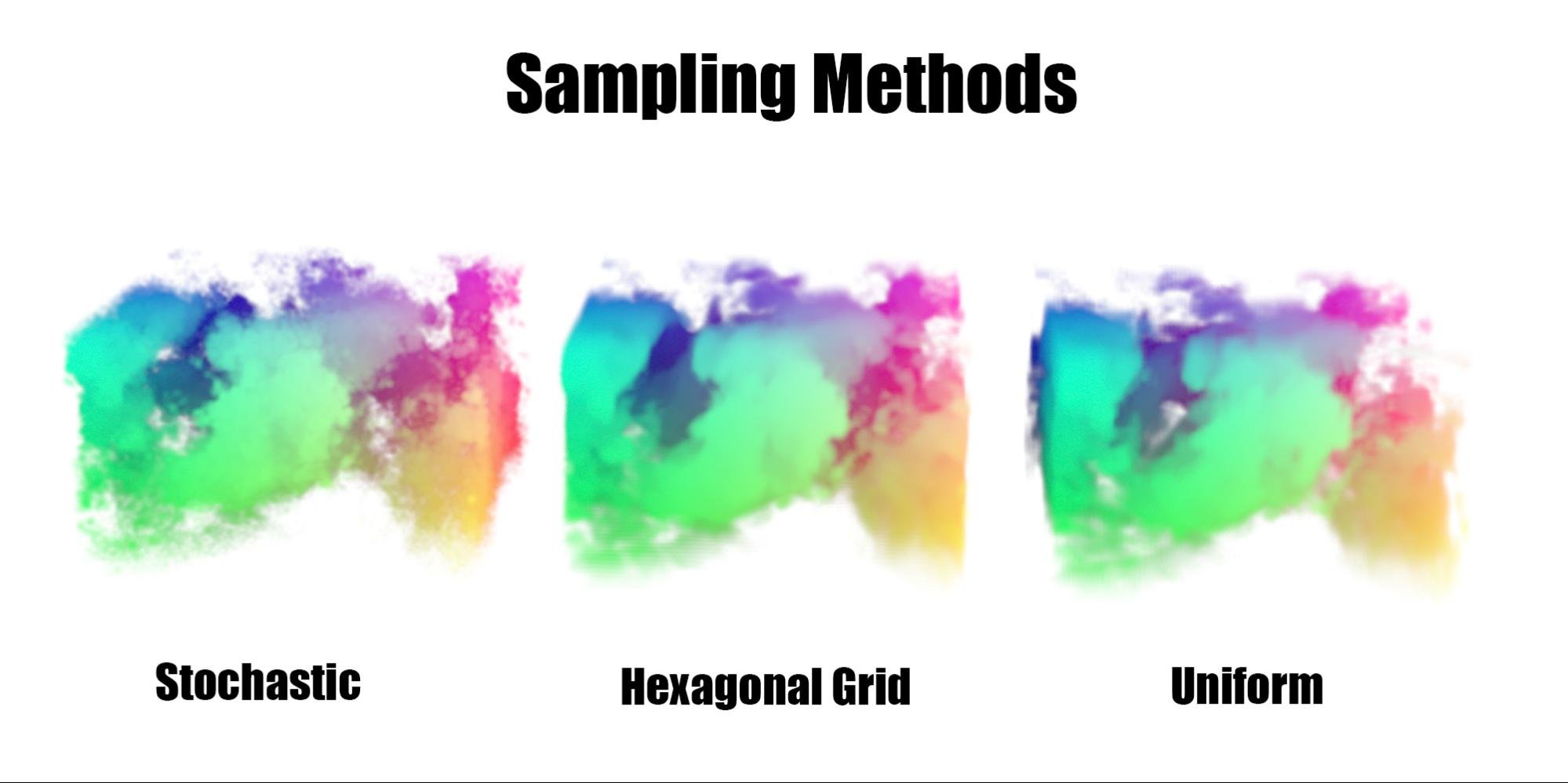
OTOY Studio Integration
The OTOY Studio portal brings hundreds of utilities and CG pipeline tools, ML models to the Octane 2027 scene graph including: asset creation, iteration, design, keyframe interpolation, style transfer and 4D media canvas / timeline editing. Octane 2027 natively supports neural rendering workflows and emerging 3D world models integrating into OTOY Studio through partners like World Labs and LightTricks.
USD Exporter: ORBX Feature Parity
Octane 2027 extends support for importing and rendering of industry standard USD scenes further with native USD export from all Octane DCC plug-ins. Exported USD files can now be directly loaded and modified in any USD based app, with all ORBX data embedded in the USD file.
Environment Map Visibility Cache
New support for Environment Map Visibility Caching improves HDRI environment sampling, enabling the generation of noise-free render results faster than previous implementations, especially under low light conditions. This is useful in a number of scenarios but specially suited to render indoor environments where most of the light contribution is provided by an external source.
These images feature an indoor scene with heavy occlusion to the environment map. Left (before) is stock environment map sampling. Right (after) is a new method with visibility cache where portions of the environment map that are visible are sampled.
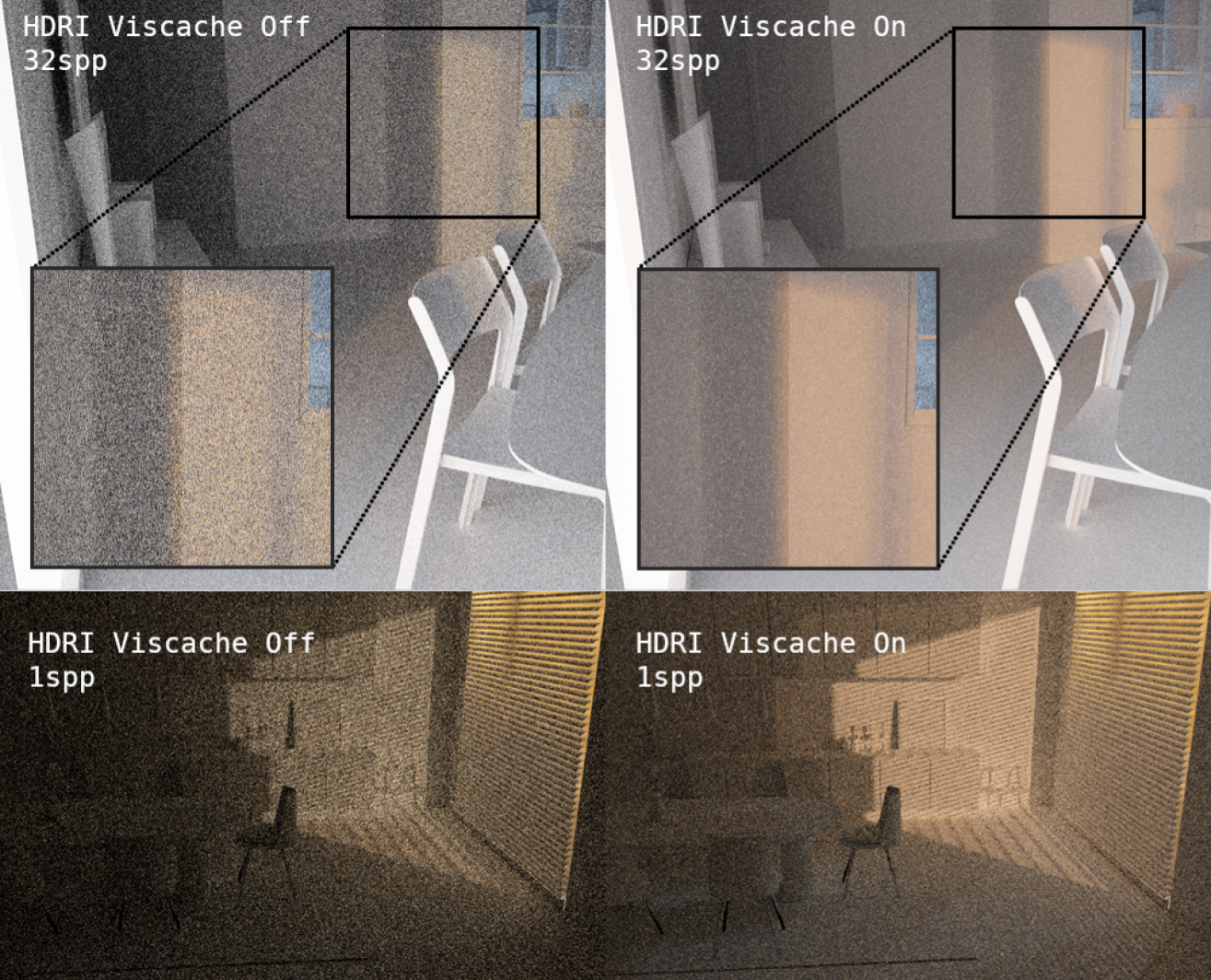
GPU Mesh Deformations
The next version of Octane will migrate the logic of geometry modifiers in Octane like bone deformations and vertex displacement from the CPU to GPU, increasing real-time processing and making editing these types of scenes much faster for each iteration.
Unlimited UV Maps
Upcoming versions of Octane will expand the number of UV maps per mesh from three UV maps per mesh to a significantly higher number of UVs per mesh – with a goal to increase to unlimited UV maps – removing workflow constraints in some Octane DCC integrations.
Python API
OTOY is developing a module API to support Python – with similar functionality to the current Lua API – giving users a new option to programmatically interact with Octane and their Octane scenes, leveraging the widespread Python programming language and the extensive libraries that are available for it.
Accelerating the Future of Rendering
The game-changing rendering features are available today in production for Octane 2026.1 – with more neural workflows coming soon in OTOY Studio and Octane 2027!
Subscribe to OctaneStudio+ today to take advantage of the most powerful suite of Octane software and services we’ve ever released, with up to €50 in Render Credits to use on OTOY Studio for next generation generative AI workflows and near unlimited decentralized GPU rendering power on the Render Network.
About OTOY Inc.
OTOY Inc. is the definitive cloud graphics company, pioneering technology that is redefining content creation and delivery for media and entertainment organizations around the world. OTOY’s Academy Award®-winning technology is used by leading visual effects studios, artists, animators, designers, architects, and engineers, providing unprecedented creative freedom, new levels of realism, and new economics in content creation and distribution powered by the cloud. For more information, visit www.otoy.com.
Additional Resources:
- Read more about The Render Network.